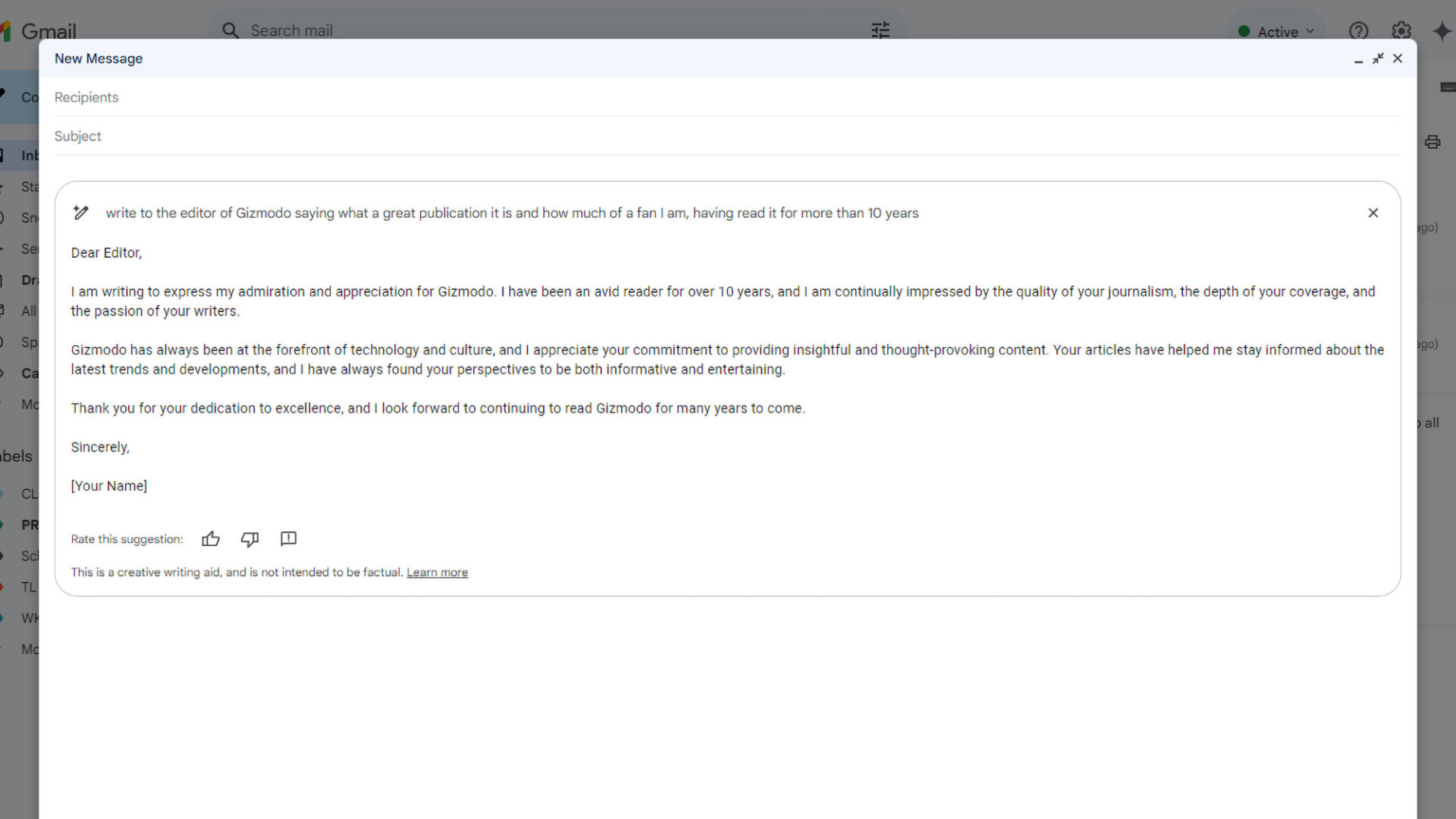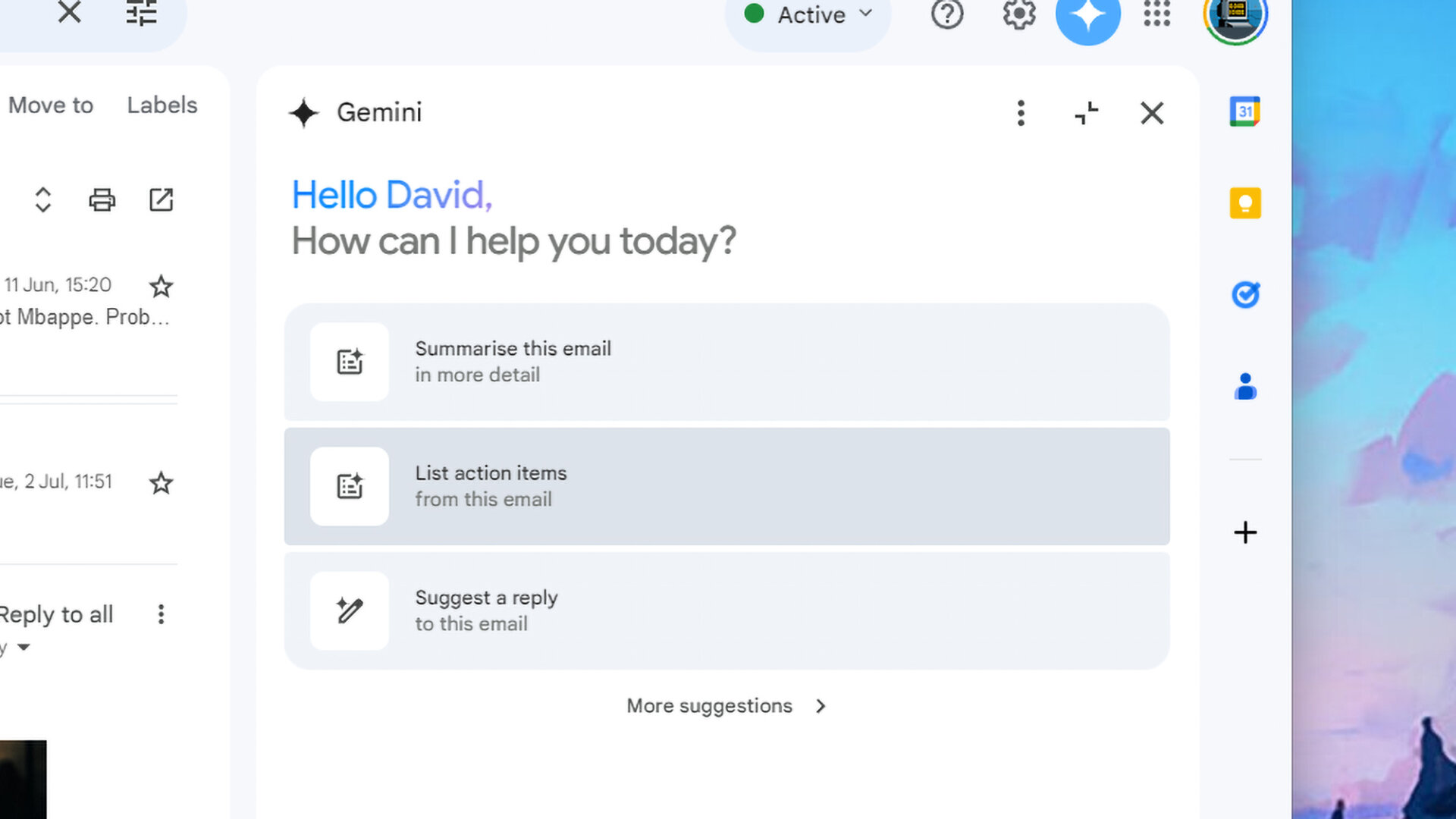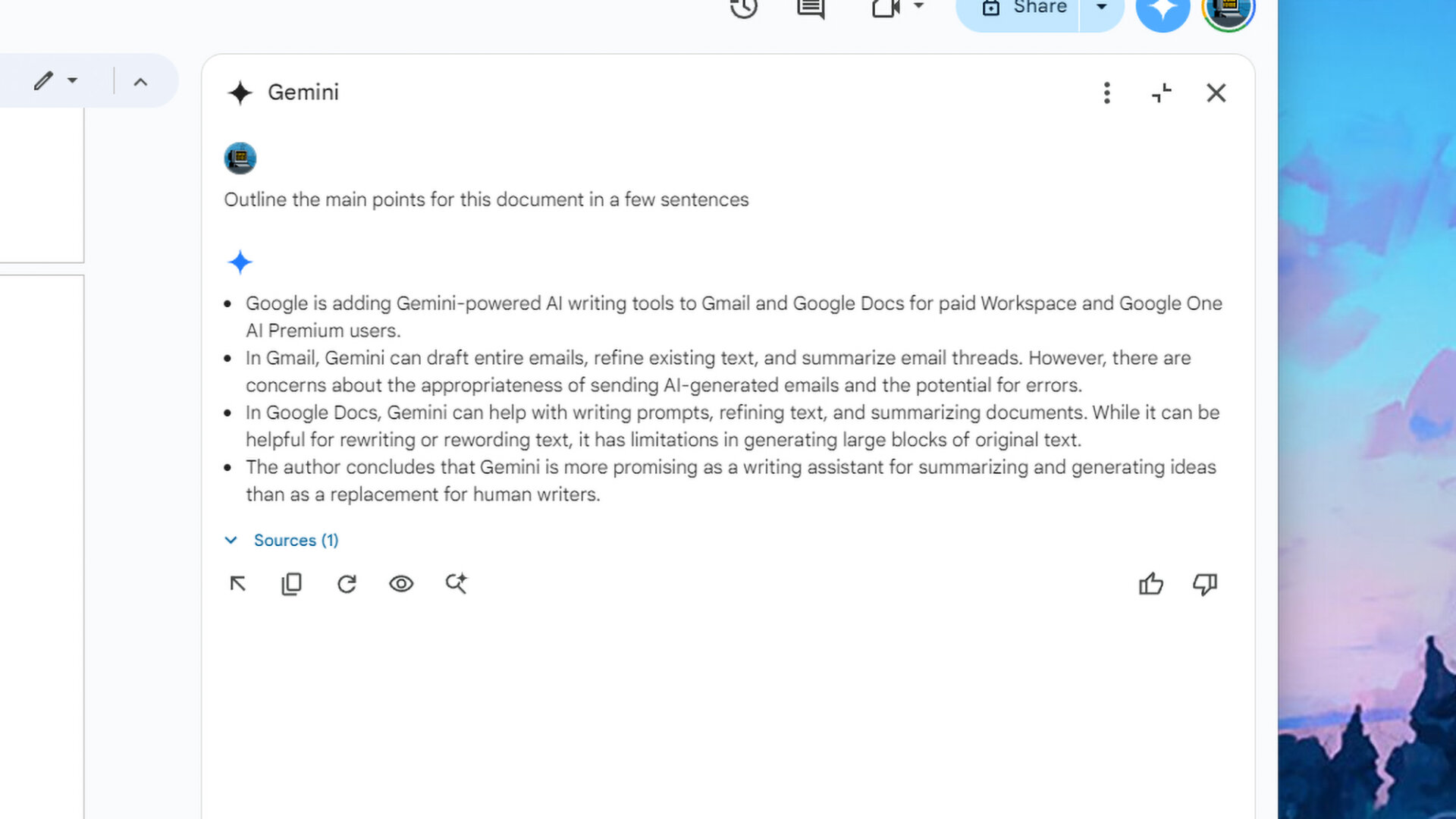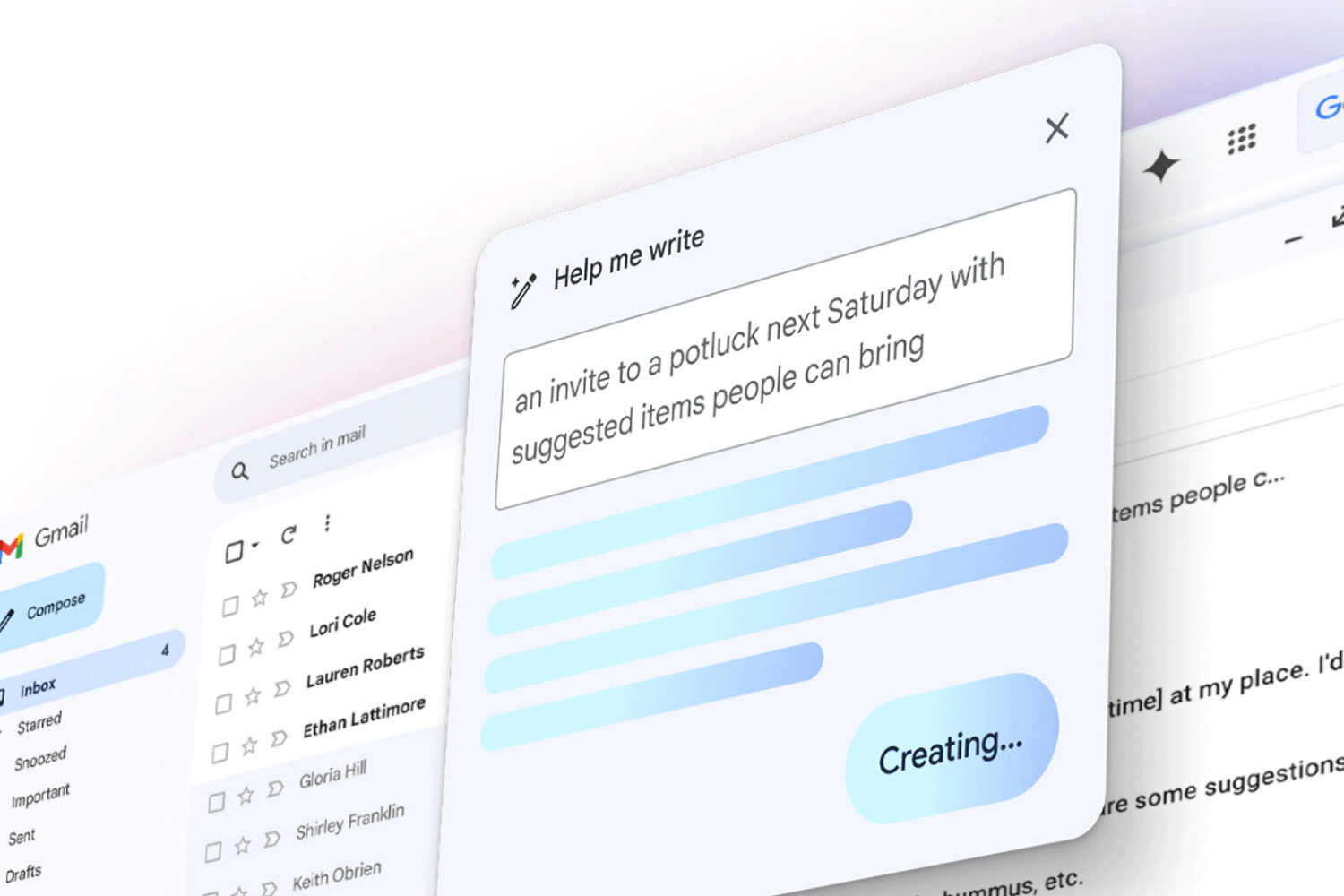Generative artificial intelligence is just about everywhere at the moment, finding its way into academic papers, student essays, digital ebooks, police reports, tech blogs, and plenty more places besides. It’s now very easy to churn out thousands of words on just about any topic imaginable, with a few clicks and well-chosen prompts—and Google is keen to help users get involved in this AI content production boom, adding writing tools powered by its Gemini chatbot into Gmail, Google Docs, and other apps.
Note that, for now, these features are only available if you or your organization is paying for Google Workspace or you’re signed up for a Google One AI Premium plan—but they might well filter down to personal accounts in the future. Here’s where this Gemini-powered writing assistance pops up, how you can use it, and the ways in which it might be best deployed.
Gemini AI in Gmail
AI has been around in Gmail for several years now, in features such as Smart Reply and Smart Compose, but the addition of Gemini takes text composition to a whole new level. Start composing a fresh email in Gmail on the web, and you’ll see a little pen with a star next to it on the bottom toolbar: Click on this, and you can enter a prompt for your entire email. As usual, the more detailed the prompt, the better the results.
Once Gemini has done its thinking, you can rank the results with a thumbs up or thumbs down. You can click Insert to accept the text and add any edits you like to it, or you can click the Refine button underneath to make changes—it’ll help you shorten the prose, elaborate on what’s already been set, or make it more formal, for example.

These options to refine text can also be used on email text you’ve written using your own human mind—just click on the pen icon, as before. Based on the testing that I’ve done, this is where Gemini is actually most useful, particularly in shortening lengthy emails. However, you’re still going to have to double-check them to make sure they haven’t missed anything important.
Being able to generate clear and natural-sounding text like this is an impressive feat, but it’s hard to know who you would want to send an AI-generated email to. Not a friend or family member, surely? Probably not your boss or colleagues, either. Maybe AI could be used to outsource boring admin emails? But with hallucinations always a risk, you might find you’ve suddenly agreed to pay twice the going rate for your broadband.

One of my test prompts was “write to the editor of Gizmodo saying what a great publication it is and how much of a fan I am, having read it for more than 10 years”. The responses were fine, up to a point, but rather stilted and dull—like they were the condensed and averaged-out results of a million thank you notes and letters of appreciation (which of course is how this all works).
Gemini also appears as a Summarize this email button at the top of email threads in Gmail, and it can list actionable items from email threads, too, via the Gemini button (top right). This actually works well, and I can see it being helpful—as long as your emails aren’t important enough that missing a detail or two is going to matter.
Gemini AI in Google Docs
As it stands at the moment in Google Docs with Gemini enabled, as soon as you create a blank document you’ll be met with a Help me write prompt, right at the top. Click on this, and you can enter prompts to produce text on anything you like: Opening chapters of novels, agendas for meetings, explainers for how DNA works in the body… whatever it is you need inspiration with.
The Gemini AI button (the small blue pen with a star next to it) follows you around as you write, right next to the comment and emoji buttons. You can use it to drop in short sentences or longer blocks of text whenever you like—and you can even ask it to carry on in the same style and tone as what’s already on the page.

A lot of the time, you’ll get the same generic text you’re used to from Gemini, ChatGPT, and Copilot. My efforts to get Gemini to write a pitch for a television show that “blends the best bits of Twin Peaks, Westworld, The Leftovers, and Presumed Innocent” led to—and you may have heard some of these phrases before—the creation of “complex characters,”, a “tragic past,” and a small town where “reality is not quite what it seems.”
Like with Gmail, it’s the summary and rewriting features that are perhaps the most useful here. You can select text before clicking the AI pen button to refine it, and you can use the Gemini star button (in the top right corner) to get summaries of documents, to rephrase certain blocks of text, or to come up with new ideas based on what you’ve already written.

For writers, the option to quickly rewrite or reword small bits of text makes Gemini more helpful—a little bit like a supercharged thesaurus. For generating large blocks of text, though, it has its limits, unless you’re looking for writing that’s rather bland and forgettable (and quite possibly filled with mistakes, depending on what it is you’re writing about). And bear in mind that Google Docs keeps a revision history, which shows large chunks of text appearing out of nowhere next to your name…
Personally, I can’t imagine a scenario where I would ever ask generative AI to invent fresh text for me that I wouldn’t prefer to just write and research myself. The tech has more promise when it comes to summarizing, and coming up with new ideas, and perhaps this is where it’s going to find its place: A writing assistant rather than a writer replacement.














